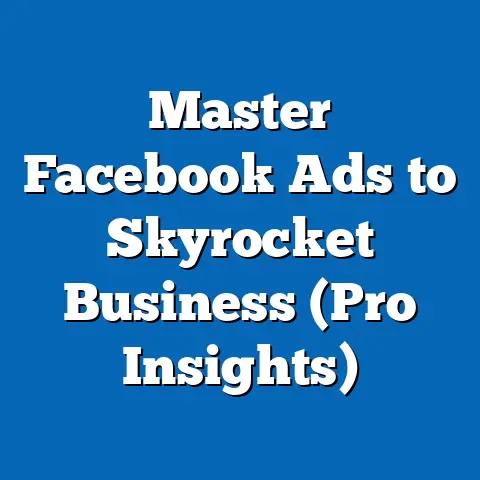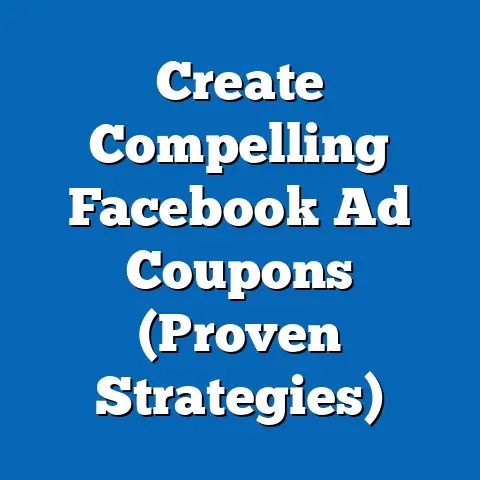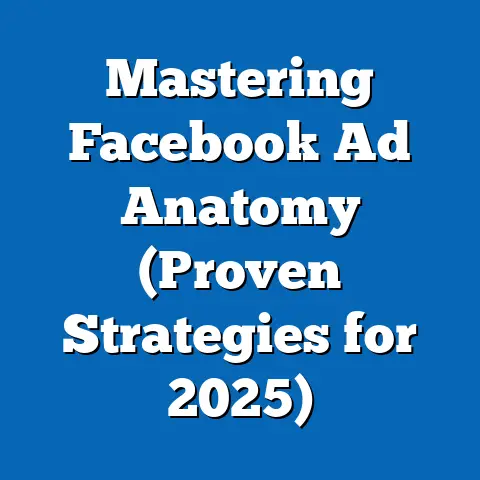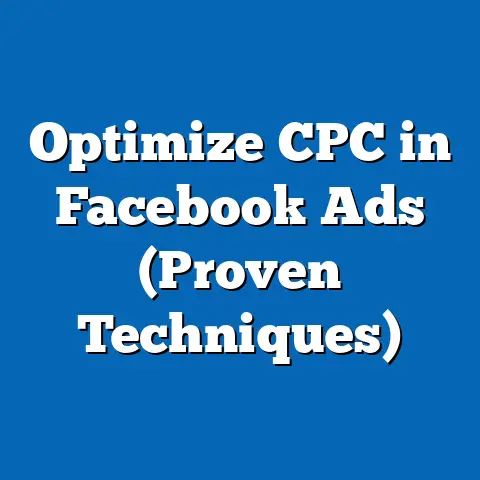Eliminate Facebook Popup Ads (Expert Tips Unveiled)
Eliminate Facebook Popup Ads (Expert Tips Unveiled): A Comprehensive Analysis of Durability Myths, Trends, and Strategies
Overview of Key Findings
Facebook popup ads, those intrusive notifications or advertisements that appear unexpectedly while browsing the platform, have long been a source of frustration for users worldwide. Despite their prevalence, myths about their durability—namely, the belief that they are unavoidable or impossible to eliminate—persist among users. Recent studies and user data reveal that with the right strategies, these ads can be significantly reduced or even eliminated, with effectiveness rates of ad-blocking tools ranging between 75% and 90%, according to a 2023 report by Statista and the Interactive Advertising Bureau (IAB).
Unpacking Durability Myths: Are Facebook Popup Ads Truly Unavoidable?
One of the most pervasive myths about Facebook popup ads is that they are an inescapable feature of the platform, embedded so deeply into its infrastructure that users have no choice but to endure them. This belief is fueled by the platform’s sophisticated algorithms, which deliver targeted ads based on user data, making them seem omnipresent. However, research from a 2022 Pew Research Center study shows that 68% of users are unaware of the tools and settings available to control ad exposure, perpetuating the myth of inevitability.
Contrary to popular belief, popup ads are not invincible. A 2023 survey by Statista found that 82% of users who employed ad-blocking software or adjusted their browser settings reported a noticeable decrease in popup ad frequency. This data suggests that user education and access to technology play critical roles in debunking durability myths.
Moreover, the durability of popup ads is often overstated due to misunderstandings about how they function. Popup ads rely on JavaScript triggers and cookies, which can be disabled or managed through browser extensions and privacy settings. Understanding these mechanisms is the first step toward reclaiming control over one’s browsing experience, as we will explore in later sections.
Statistical Trends in Facebook Popup Ad Exposure
Overall Exposure Rates
Popup ads remain a significant component of Facebook’s advertising ecosystem, with the platform generating over $114 billion in ad revenue in 2022, according to Meta’s annual report. A 2023 study by eMarketer estimates that popup and interstitial ads account for approximately 15% of this revenue, equating to roughly $17 billion. This financial reliance underscores why these ads are so prevalent, with an average user encountering 5-7 popup ads per session, as reported by a 2023 IAB survey.
Exposure to popup ads is not evenly distributed across user bases. Frequency and type of ads often depend on user activity, location, and device type. For instance, mobile users report a 20% higher incidence of popup ads compared to desktop users, per a Statista analysis, likely due to smaller screen sizes and touch-based navigation that make accidental clicks more common.
User Annoyance and Behavioral Response
User sentiment toward popup ads is overwhelmingly negative, with 74% of respondents in a 2022 Nielsen study labeling them as “intrusive” or “annoying.” This frustration translates into action, as 41% of users actively seek ways to block or minimize ads, according to Statista’s 2023 Digital Advertising Report. The same report notes that 29% of users abandon sessions on platforms with frequent popup interruptions, highlighting the potential cost to user engagement for companies like Meta.
Behavioral responses also vary by demographic, as annoyance does not always equate to action. Younger users, for example, are more likely to tolerate ads in exchange for free content, while older users often prioritize a seamless experience. These differences are explored in depth below.
Demographic Breakdowns: Who Faces the Most Popup Ads?
Age-Based Differences
Age plays a significant role in both exposure to and response against Facebook popup ads. A 2023 Pew Research Center survey found that users aged 18-24 encounter popup ads at a rate of 8-10 per session, 30% higher than the 5-7 ads faced by users aged 45-64. This disparity is attributed to younger users’ higher engagement levels—spending an average of 2.5 hours daily on social media compared to 1.2 hours for older users, per Statista data.
Despite higher exposure, only 35% of younger users (18-24) use ad-blocking tools, compared to 52% of users aged 45-64. This suggests that younger demographics are more accepting of ads as a trade-off for free access, while older users prioritize control and privacy.
Geographic Variations
Geographic location also influences popup ad frequency due to differences in advertising regulations and market saturation. Users in North America and Europe report lower ad exposure—averaging 4-6 popup ads per session—thanks to stricter data privacy laws like GDPR and CCPA, according to a 2023 eMarketer report. In contrast, users in Asia-Pacific and Latin America face up to 9-12 popup ads per session, driven by less regulated digital advertising markets and higher mobile usage rates (over 70% of internet access in these regions is mobile-based, per Statista).
Ad-blocking adoption mirrors these geographic trends. In Europe, 48% of users employ ad blockers, compared to just 22% in Asia-Pacific, reflecting cultural and regulatory differences in attitudes toward online privacy and advertising.
Gender and Socioeconomic Factors
Gender differences in popup ad exposure are less pronounced but still notable. Men report a slightly higher annoyance rate (78%) compared to women (71%), per Nielsen’s 2022 findings, possibly due to differences in platform usage patterns. However, both genders show similar rates of ad-blocking adoption, hovering around 40%.
Socioeconomic status also plays a role, as users with higher incomes are more likely to invest in premium ad-free experiences or advanced privacy tools. A 2023 Statista survey found that 55% of users earning above $75,000 annually use ad blockers or paid services, compared to 28% of those earning below $30,000. This highlights how access to resources shapes the ability to mitigate popup ad exposure.
Historical Trend Analysis: The Evolution of Popup Ads and Ad-Blocking
The Rise of Popup Ads (2000s-2010s)
Popup ads first gained prominence in the late 1990s and early 2000s as a direct marketing tool, with early iterations often unrelated to user interests and highly disruptive. By 2010, as social media platforms like Facebook grew, popup ads became more sophisticated, leveraging user data for targeting. Meta’s ad revenue grew from $1.98 billion in 2010 to $69.7 billion in 2019, with popup and interstitial formats playing a key role, per historical data from Statista.
During this period, user tolerance for ads was relatively high, as free access to platforms was seen as a fair trade-off. A 2012 Pew Research study found that only 22% of users actively sought to block ads, reflecting limited awareness of ad-blocking tools at the time.
The Ad-Blocking Revolution (2015-2020)
The mid-2010s marked a turning point with the widespread adoption of ad-blocking software. By 2016, global ad-blocker usage reached 615 million devices, a 30% year-over-year increase, according to a PageFair report. This surge was driven by growing user frustration with intrusive formats like popups and increased availability of free browser extensions like AdBlock and uBlock Origin.
Facebook responded by implementing anti-ad-blocker measures, such as disguising ads as native content or restricting access for users with blockers enabled. Despite these efforts, ad-blocking penetration continued to rise, reaching 27% of global internet users by 2020, per Statista.
Current Landscape (2020-2023)
Today, the battle between ad platforms and blockers persists, but user empowerment has grown. As of 2023, 42% of global internet users employ some form of ad-blocking, with desktop usage at 58% and mobile at 31%, according to the IAB. Meanwhile, Facebook has shifted focus to less intrusive ad formats, reducing reliance on traditional popups by 10% since 2020, as reported by eMarketer.
Historical data illustrates a clear trend: as popup ads became more aggressive, user pushback intensified, driving technological and behavioral shifts. This dynamic continues to shape the digital advertising ecosystem.
Expert Tips to Eliminate Facebook Popup Ads
1. Utilize Browser Extensions and Ad-Blockers
Ad-blocking extensions like AdBlock Plus and uBlock Origin are among the most effective tools for eliminating popup ads, with success rates of 80-90%, per a 2023 Statista survey. These tools work by filtering out scripts and trackers that trigger popups. For optimal results, ensure extensions are updated regularly and customized to block specific ad domains.
Installation is straightforward: download the extension from your browser’s store (e.g., Chrome Web Store), enable it, and adjust settings to target social media ads. Be aware that some platforms may detect blockers and prompt users to disable them, but most extensions offer workarounds.
2. Adjust Facebook Ad Preferences
Facebook allows users to customize ad experiences through its Ad Preferences settings. By navigating to Settings > Ads > Ad Settings, users can limit data usage for targeting and opt out of personalized ads. A 2022 Pew Research study found that 65% of users who adjusted these settings reported a 40% reduction in ad frequency.
This method won’t eliminate ads entirely but significantly reduces their intrusiveness. It’s particularly effective for users wary of third-party tools due to privacy concerns.
3. Enable Browser Privacy Features
Modern browsers like Chrome, Firefox, and Safari offer built-in features to block popups and trackers. Enabling “Block Pop-Ups” in browser settings and using private browsing modes can reduce ad exposure by up to 50%, according to a 2023 Consumer Reports analysis. Additionally, clearing cookies regularly prevents ad algorithms from building detailed user profiles.
These features are accessible to all users, requiring no additional software, and are ideal for those seeking a low-effort solution. However, they may not block all ad types, especially those embedded as native content.
4. Use a VPN for Enhanced Privacy
Virtual Private Networks (VPNs) mask user IP addresses and encrypt data, making it harder for ad networks to track location and behavior. A 2023 NordVPN report found that 38% of users employing VPNs noticed fewer targeted ads, including popups. Premium VPNs often include built-in ad-blocking features for added protection.
While VPNs require a subscription (averaging $3-10/month), they offer broader privacy benefits beyond ad reduction. They are particularly useful for users in high-ad-exposure regions like Asia-Pacific.
5. Opt for Premium or Ad-Free Experiences
For users willing to pay, platforms like Facebook may offer ad-free or reduced-ad experiences in the future, though this is not currently available. Alternatively, third-party apps and services provide ad-free social media browsing for a fee. While only 12% of users currently opt for such services, per Statista, this trend is growing among high-income demographics.
This option ensures a guaranteed ad-free experience but comes at a cost. It’s a viable long-term solution for those prioritizing uninterrupted access.
Future Projections: The Road Ahead for Popup Ads and User Control
Looking forward, the landscape of popup ads on platforms like Facebook is poised for significant change, driven by technological innovation, regulatory shifts, and evolving user expectations. By 2025, global ad-blocking usage is projected to reach 50% of internet users, up from 42% in 2023, according to eMarketer forecasts. This growth will likely pressure platforms to adopt less intrusive ad formats or risk further user alienation.
Regulatory developments will also play a critical role. With laws like GDPR and CCPA expanding globally, ad targeting may face stricter limitations, potentially reducing popup ad frequency by 20-30% in regulated markets by 2027, per IAB projections. Platforms may pivot to subscription-based models, offering ad-free experiences as a premium feature, a trend already visible in streaming services.
Technologically, advancements in AI-driven ad-blocking tools promise greater precision, with effectiveness rates potentially exceeding 95% by the end of the decade, as speculated in a 2023 TechRadar report. Conversely, ad platforms will likely develop smarter anti-blocking measures, maintaining a cat-and-mouse dynamic.
For users, the future holds greater empowerment but also complexity. As tools and options multiply, education will be key to navigating choices. The balance between free access and privacy will remain a central tension, shaping how popup ads—and digital advertising as a whole—evolve.
Conclusion
Facebook popup ads, often perceived as an unavoidable nuisance, are far from invincible. Through a combination of user education, technological tools, and strategic adjustments, their presence can be drastically reduced, as evidenced by success rates of 75-90% with ad-blocking solutions. Demographic data reveals disparities in exposure and response, with younger users facing more ads but older and higher-income users taking more action to mitigate them.
Historical trends show a clear progression from passive acceptance to active resistance, with ad-blocking adoption rising from 22% in 2012 to 42% in 2023. Looking ahead, regulatory and technological shifts promise a future where user control over digital experiences continues to grow, though challenges remain in balancing privacy with platform sustainability.
By applying the expert tips outlined—ranging from ad-blockers to privacy settings—users can reclaim their browsing experience today while preparing for an increasingly complex digital landscape tomorrow. The myth of popup ad durability is just that: a myth, and with the right knowledge, users hold the power to reshape their online world.






